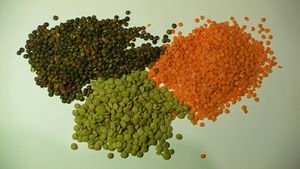Protein plays an important role in the body because they contain substances like enzymes, hormones and antibodies that help in the proper functioning of any organism. Adequate protein intake aids in functioning of the cells and organs in the body. It is needed to help prevent muscle loss, and helps a lot during times of physical and emotional stresses.
Common protein rich foods include milk, soy milk, eggs, cheese, yogurt, peanut butter, lean meats, fish and poultry, beans, tofu, lentils and other legumes, grains, nuts and seeds.
Answers.com defines protein as “any of a group of complex organic macromolecules that contain carbon, hydrogen, oxygen, nitrogen and usually sulfur. They are composed of one of more chains of amino acids”. The amino acids serve as building blocks necessary for building, maintaining and repairing body tissues.
The goal is for the body to have a complete protein. Foods from animal sources, contain complete proteins. Lean meats and poultry are known to be the main source of protein, specifically a complete protein. Vegetarians for one, would definitely want healthy meals, but would they do about it, when these are the kind of foods that many want to avoid?
Nutritionists and other experts explain that the trick is to take a combination of proteins. This does not mean, however, that all sources should be eaten at exactly the same meal. Intakes of different types of protein which complement each other should be eaten to have a combination of proteins at every meal.
Many plant foods contain incomplete protein. This is because of the lack of one or more of the essential amino acids in them. But by combining this with other plant foods that have complete amino acid mixtures would make up for that. These are called complementary proteins.
For instance, grains are generally low in the same amino acids. Another plant family like legumes are low in different amino acids. But if they are eaten together, the other plant would provide the amino acids that are low in the other plant protein. In short, they really complement each other. When food are paired and eaten together, they would result in a good balance of amino acids.
So here is a list of combinations that could provide a good balance of amino acids:
1. Cereal + milk. The most obvious and famous combination would be the breakfast cereal and milk. Go for whole grain cereals because they are healthy. They help dieters lose weight. At the same time, whole grain cereals provide fiber to the body, thus preventing diseases. High-fiber cereals are also sources of vitamin B-complex and iron. Bran cereals are also good, and may even help ease constipation problems.
2. Paste + cheese. Macaroni and cheese would be a good example of this. Putting Parmesan cheese to your pasta may not only add flavor, it could actually create that combination for your complete protein. Cheese-filled tortellini may fall under this category as well. Just take it easy on the sauces.
3. Rice + milk. A good example of this is the rice pudding. Or better yet, after a meal of rice and fish for instance, then take a glass of milk.
4. Wheat + peanuts. Isn’t a good peanut butter sandwich always a treat for everyone? Now you would know that it is not only a yummy snack, but it is also a source of complete protein. Don’t overdo it, though. Adding jelly might be too sweet, and you might have too much sugars and carbohydrates. Follow the label of the peanut butter jars, because they would guide you of the right healthy amount.
5. Beans + wheat. Whipping up a baked bean sandwich would be a good example. Use brown bread, put a little butter and use baked beans. Take note that beans are a good source of phosphorus, potassium and many vitamins.
6. Peas + rye. Have some split pea soup and partner it with rye bread. Peas are legumes that are a source of vitamins, especially potassium that can help fight osteoporosis. They are high in fiber, low in fat and contain no cholesterol.
7. Beans + corn. The famous beans and tortillas is well-loved by many. The added tomatoes and lettuce would definitely spice it all up. While beans help provide healthy skin, hair and, muscles and brain function, corn tortillas may provide a certain amount of potassium and calcium.
8. Soybeans + seeds/nuts. Snack on trail mix. Instead of watching TV and munching on potato chips, the best alternative would be the dependable trail mix. Choose the brands that are not loaded with sodium and sugars.
Sources




